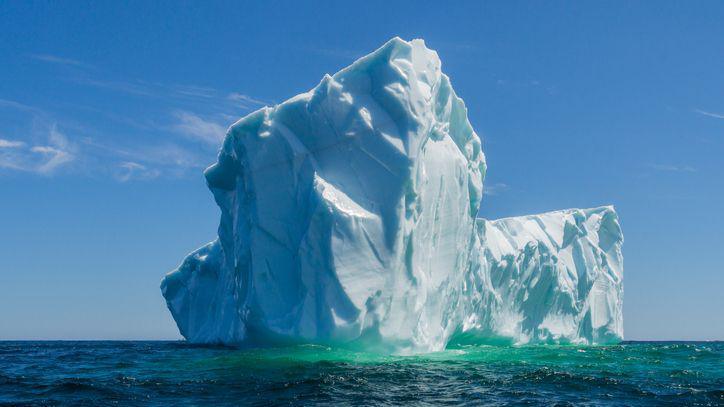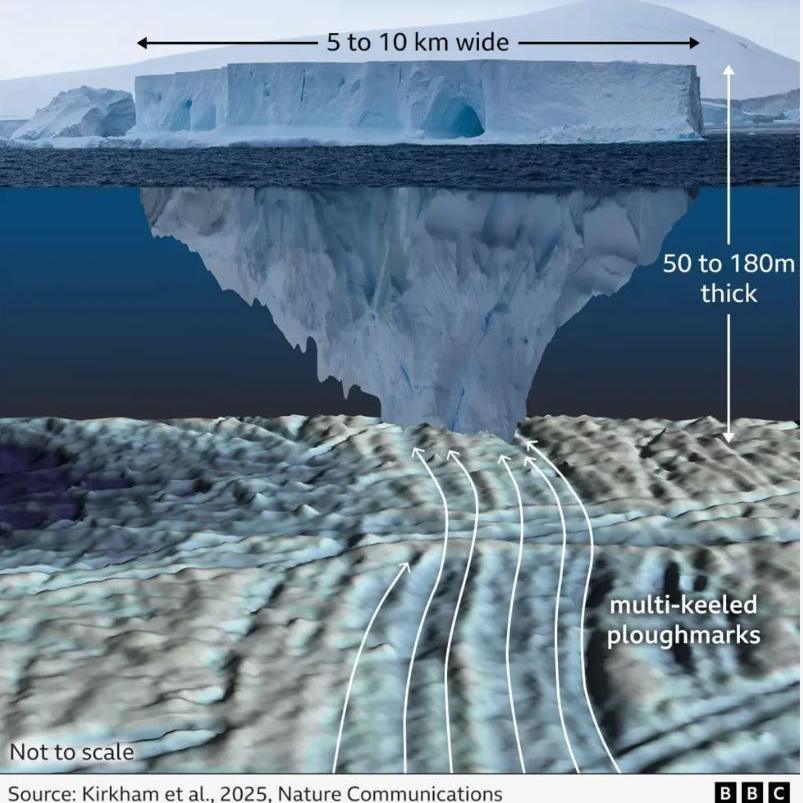Giant icebergs once floated off the coast of Britain scientists say

- Published
New evidence has revealed that giant icebergs once floated off the coast of Britain.
Scientists found scratch marks left behind as their undersides dragged across the floor of the North Sea in the last ice age.
Research suggests that their size would be similar to icebergs found off present-day Antarctica.
Experts say the findings could provide important clues in understanding how climate change is currently affecting the world's southernmost continent.
More like this
- Published4 February
- Published20 January
- Published18 February
What did scientists discover?

Scientists from the British Antarctic Survey used 3D seismic data to search for fingerprints of giant icebergs.
They found deep, comb-like grooves, which they believe were created by the undersides of large icebergs that broke off the British-Irish ice sheet more than 18,000 years ago.
They were found preserved in the sediments buried beneath the present-day seafloor.
By taking a closer look at these grooves, experts were able to estimate that the icebergs could have been around 3-6 miles wide and 50-180 metres thick, although it's difficult to be exact.
They also discovered that some of these scratch marks are as close as 90 miles to Scotland's present-day east coast.

James Kirkham, marine geophysicist at the British Antarctic Survey and lead author of the new study explained that their research also suggests how the icebergs may have looked like.
He explained: "We found [evidence of] these gigantic tabular icebergs, which basically means the shape of a table, with incredibly wide and flat tops.
"These have not been seen before and it shows definitively that the UK had ice shelves, because that's the only way to produce these gigantic tabular icebergs," he added.
Ice shelves are floating platforms of ice where glaciers extend out into the ocean.
Experts say it's the first time that evidence has been found showing that the ice sheet which once covered Britain and Ireland produced such large icebergs.
